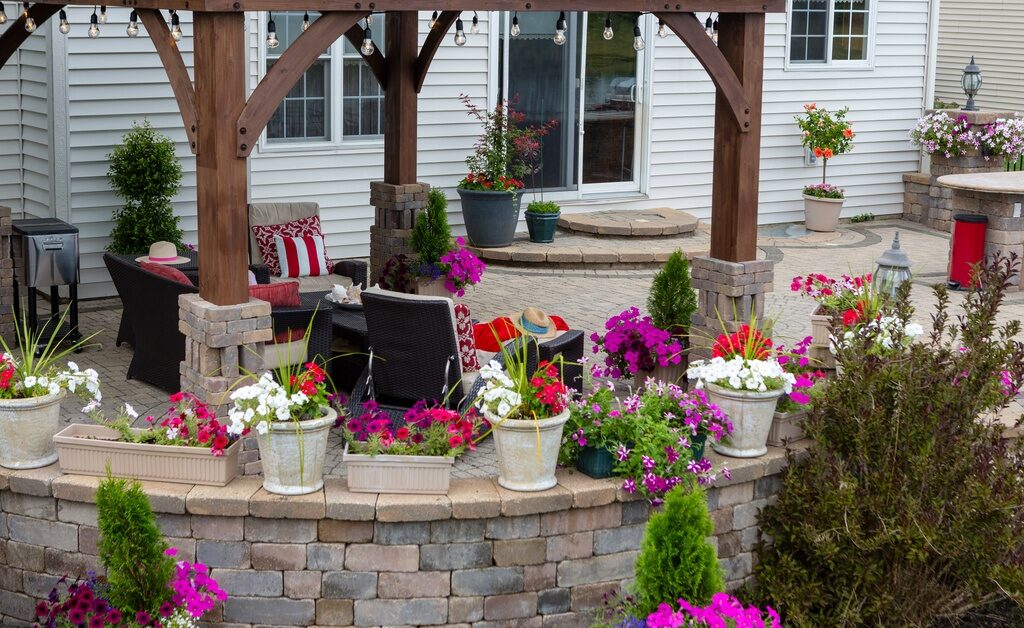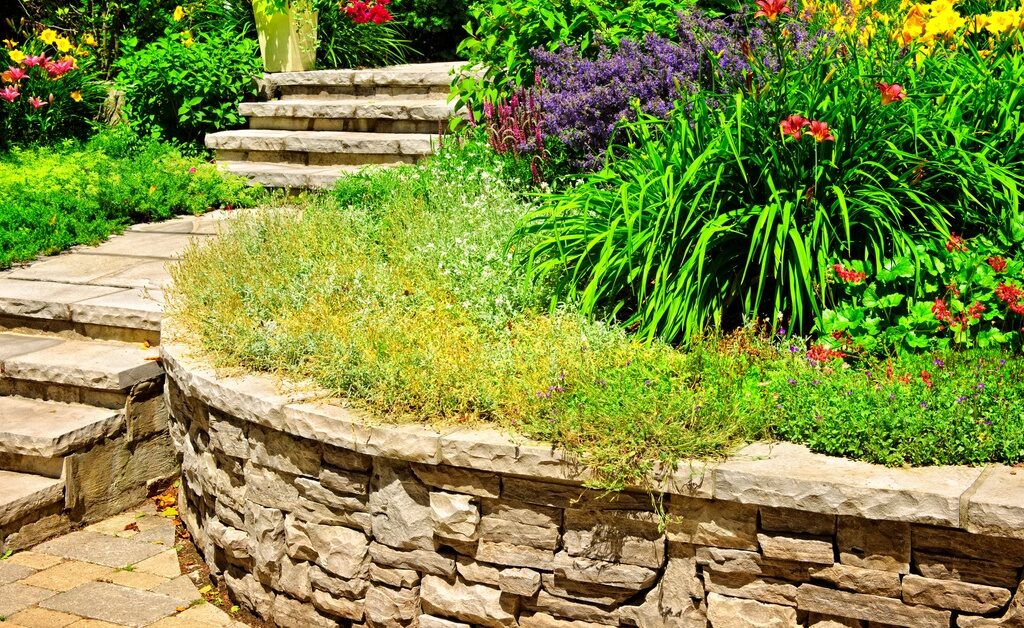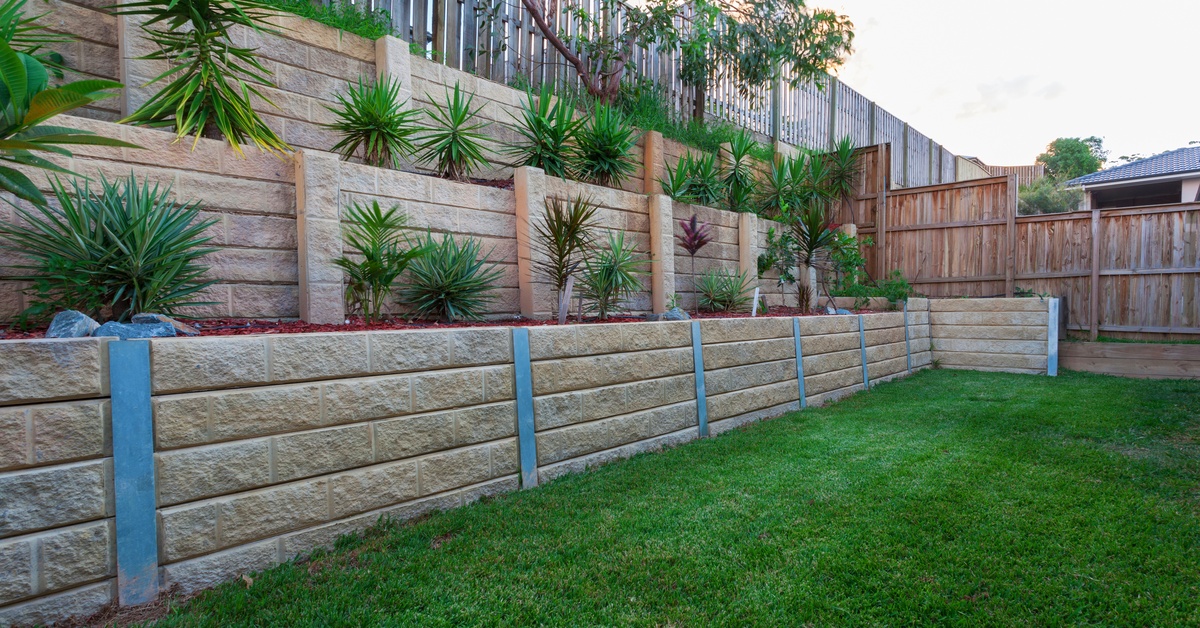A sloped property comes with unique challenges that affect everything from landscaping to structural stability. Gravity, rain, and wind constantly work against the incline, making smart outdoor design essential. But a hillside isn’t a limitation; it’s a chance to create something both functional and visually striking.
Retaining walls offer more than just support. They transform difficult terrain into usable, attractive space while protecting your property and enhancing its long-term value.
Prevents Soil Erosion
Sloped terrain is especially vulnerable to erosion. Rain can wash away topsoil, wind can shift loose dirt, and gravity constantly pulls soil downhill. Signs like exposed roots, carved channels, and sediment buildup at the base of a slope often indicate erosion in action.
A well-built retaining wall stops this process by holding soil in place and reinforcing the landscape against natural forces. It protects vegetation, maintains the slope’s structure, and creates a safer, more stable environment. For both residential and commercial properties, retaining walls are a smart, long-term investment in the health and durability of the land.
Manages Water Drainage Effectively
Water runoff on a sloped property can lead to a host of serious issues. Without proper management, rainwater can pool in undesirable areas, creating soggy patches that drown plant life and attract pests. More critically, uncontrolled runoff can seep into your home’s foundation, leading to costly water damage and structural problems over time. The constant flow of water can also carve out channels in your landscape, degrading its appearance and creating hazards. Walkways and patios may become slippery or even begin to shift and crack under the pressure.
Modern retaining walls can be engineered with integrated drainage systems to manage water flow intelligently. These systems, such as weep holes or French drains, channel water away from vulnerable areas and direct it to a safe disposal point. This prevents water from building up behind the wall, which is crucial for maintaining its own structural integrity.
Increases Usable Space
A retaining wall does more than just hold back soil. It reclaims your landscape and unlocks its full potential.
Functional Spaces
Steep slopes offer little room for outdoor living or practical use. A retaining wall levels out the land, creating terraces or flat areas perfect for patios, walkways, or garden zones. What was once wasted space becomes an extension of your home.
Residential Applications
For homeowners, these newly leveled areas open the door to countless outdoor possibilities. They can build raised garden beds for flowers or vegetables, create a private seating area for hosting guests, or install a fire pit or outdoor kitchen with a view. Retaining walls can also create safe, level play areas for children, transforming uneven terrain into family-friendly outdoor living spaces.
Beyond function, these walls shape a more attractive, organized landscape that feels intentional and inviting. Whether you’re enhancing your backyard for everyday use or preparing your home for resale, a well-designed retaining wall adds lasting beauty and value.
Improves Property Aesthetics

Beyond their functional benefits, retaining walls are a powerful tool for enhancing the visual appeal of your property. The clean lines and solid presence of a concrete or stone wall can introduce a sleek, modern element to your landscape design, boosting curb appeal significantly. Gone are the days of purely utilitarian barriers; today’s retaining walls are design features in their own right, capable of transforming the entire look and feel of an outdoor space.
The possibilities for customization are nearly endless. A tiered wall design can add depth and architectural interest to a simple slope, creating a sense of grandeur and structure. Integrated lighting can be installed to highlight the wall’s texture at night, providing both beauty and safety. You can even incorporate planting pockets into the wall itself, allowing greenery to soften its appearance and blend it seamlessly with the surrounding landscape. With a wide range of materials, finishes, and design options, a retaining wall can be tailored to perfectly complement your property’s unique style.
Enhances Structural Integrity of the Property
A sloped terrain can exert immense pressure on the buildings and paved surfaces located at its base. Over time, the constant force of shifting soil and water can lead to foundation cracks, leaning fences, and damaged driveways. A retaining wall acts as a formidable barrier, absorbing this lateral pressure and protecting your property’s most critical structures. It serves as a shield, ensuring that the downward force of the slope is safely contained and managed.
This is a long-term investment in the safety and stability of your entire property. On hilly terrain, the risk of landslides or significant soil slippage is always a concern, especially during periods of heavy rain. A well-designed and professionally installed retaining wall dramatically reduces this risk, providing peace of mind and safeguarding your home or business from potential disaster. By reinforcing the landscape, you are also reinforcing the security and longevity of the structures built upon it.
Adds to Property Value
One of the top reasons to design retaining walls for sloped terrain is the boost they bring to property value. An unstable or unusable slope can turn buyers away, but a well-built retaining wall transforms that space into a stable, functional, and attractive feature.
For residential properties, features like terraced gardens or level patios make a strong impression. For commercial spaces, a clean, structured landscape signals professionalism and reduces long-term maintenance risks. Whether you’re selling, leasing, or simply improving, a retaining wall makes your property stand out.
Offers Versatility in Design and Construction

No two slopes are exactly alike, which is why retaining walls can be tailored to the specific needs of each property. A professional contractor will assess your property’s unique specifications, including the soil type, the steepness of the grade, and the overall elevation changes. Based on this analysis, they can design a wall that is perfectly suited to your landscape, ensuring optimal performance and visual harmony.
The choice of materials and the quality of the installation are paramount to the wall’s longevity and effectiveness. Durable materials like high-strength concrete and natural stone are popular choices, offering both resilience and timeless beauty. Entrusting the project to experienced professionals is essential. At PNP Outdoor Development, our team provides expert retaining wall services, ensuring that every aspect of the design and construction is executed to the highest standards. A professionally built wall will stand strong for decades, delivering all the benefits of safety, function, and style.
A Foundation for Excellence
These seven reasons to design retaining walls for sloped terrain show how they solve real challenges, including controlling erosion, managing water, expanding usable space, and boosting curb appeal. They also add structural stability, increase property value, and offer flexible design options.
To get the most from your investment, work with professionals who specialize in high-quality retaining wall construction. The right team can turn even the steepest slope into a functional, beautiful part of your property.

Add a Comment